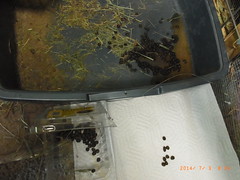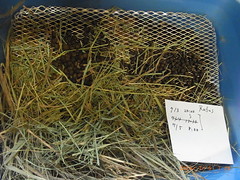このウサギウェブサイトがほぼ放置状態になってしまってから、何年も経つ。
日本語のウサギ情報サイトも増えたし、HRS方式もある程度は日本で馴染みのあるものになってきて、このサイトの役割はほぼ終わった、ということもある。
でも、実際のところは、逐一ウサギたちの健康状態を記録する切迫感というか、義務感みたいなものがなくなってしまったことが一番大きいかもしれない。
初めて、プチ子をほぼ老衰で見送るまで、我々は失敗ばかりしてきた。
その後悔が、このサイトを運営する動力源だったのだけれど、プチ子でようやく、やれることはやって、老衰で見送ってやれた、と思えてから、そこまで日々の体調の管理に躍起にならなくなってきた、と思う。
その結果、「誇」(Hokori)についての最初の記事が、最後の記事になってしまったことを申し訳なく思う。
だけど、それは、「ほこち」が、いかに優秀で、八年間ほとんど健康トラブルなく生きてくれたか、の証でもあるのだ。
***
ほこちは、Madison Area Technical Collageの動物看護師コースのTeaching Bunnyだった。
看護師育成コースだから、当然、注射や何やらの練習をする生体が必要になる。
当時、MATCではとある民間の団体と提携していて、練習台になる動物たちを借り受け、当該学期が終わると可能な限りその練習台になってくれた動物たちの里親を探す、という活動を行なっていた。
耳にDusty、と刺青が入れられたそのウサギは、仔牛の学年が借り受けたウサギで、彼もまた、2回だけ生理食塩水注射の実習の練習台になったTeachinb Bunnyだった。
とにかく人懐こいウサギで、仔牛も私も最初から彼をアダプションすると決めていた。
Dustyじゃあんまりだ、でも他にどんな名前にする? という話になったとき、ホコリ、じゃなくて「誇」にするか、ということになった。毎度のことながら、うちのウサギたちは正しい名前を呼んでもらえることがほぼなく、すっかり「ほこち」で定着してしまったため、語源がなんだったのかわからなくなったが、ほこちはおよそ自分をウサギとは思っていないような、犬みたいなウサギだった。
歯のトラブルは全くなし。
よく食べて、よく太る(これは困りもの)。
鬱滞で病院の世話になったのは、通算3回だけ。
人間の毛繕いまでしてくれるとか、人の股の間に挟まって寝るとか、ウサギとしての本能はどこにいったんだ、というくらい大らかな一方、なぜか女子ウサギにはモテなかった。あんなに尽くす男なのに。
手のかからない子は、可愛いのに記録に残りにくい。
写真を整理してみて、思っていたよりずっといい写真が少ないことに驚いた。
いつもピンボケ。よく動くから、どうしてもピントがずれる。
じっとしているときは寝ているときだから、半眼になって、太ってるからどうしても所謂「カワイイ」写真にはならない。
元気なときに撮った最後の写真は、パートナーのVincent(彼も「びんち」だの「キング」だのと呼ばれている)と一緒の写真で、それもびんちが足に腫瘍を作って12/5に足の指の一部断指手術が決まっていたから、医師への報告のために撮ったものだった。
どうしてこの子の写真を、元気なうちに、もっとアップで撮っておかなかったのか。
いつも、旅立ってしまってから後悔する。
***
12/5は、9歳のびんちの断指手術。
その一ヶ月前のCTで胸部に肺炎の痕跡がみつかり、一ヶ月の抗生物質治療を続けてきた。
高齢、既往症持ち、ということで、手術はどうなるかわからない。
そんなこんなで、私も仔牛も、注意はすっかりびんちに向いていた。
そして、12月1日の金曜日の朝、ほこちの鬱滞が判明した。
思えば、11月30日の夜、ほこちは夕食時にペレットを残していた。
ただ、野菜を結構たくさんやったし、このところはあとで戻ってきて食べることもあったので、それが不調の始まりだとは気づかなかった。
しばらくしたらペレットはなくなっていたので、戻ってきて食べたのだろう、と思っていたのだが、あれはもしかしたら、びんちが食べたのかもしれない。
1日の朝、ペレットを食べないが、野菜は食べたので、これは鬱滞の始まりだと判断した。
うちでは、野菜はまだ食べられる、という場合には、胃袋の張りを見て、強制給餌を早めに開始する。ほとんどの場合、鬱滞の原因は脱水なので、気づくのが早ければ強制給餌2〜3回で復活するし、それでも復活が遅い場合には皮下注射で生理食塩水を補液する。通常の鬱滞はほぼこれで解決する。
12月1日の夜、3回強制給仕の後にもあまり事態が好転しているように見えなかったので(まだ昼ごろまでは野菜を食べていたし、少なくていびつな形だがふんもしていた)夕方に最初の60mlの補液を行う。あっという間に吸収された。
夜10時、少しお腹が動き始めている音がして、痛そうな顔をしているが、ふんが出てこないので、追加で60cc 補液する。これもあっというまに吸収された。
吸収の速度が速いので、相当脱水していると判断した。吸収された水分はちゃんと腸にも回っている模様で、お腹の音が大きくなり始め、それに伴って痛そうな表情をすることが増えた。
(ちなみにお腹の音は聴診器がなくても、直接脇腹や背中に耳をつければ聞こえる)
通常ならこれでしばらく愉気すればふんが出始めるのだけれど、なにしろ体が大きいので(5.6kg)、まだ足りないのかと思い真夜中に120ccの補液を追加。
結論をいうと、翌日やはり事態が改善しなかったため、救急で病院に連れていったのだが、その時に注入された生理食塩水は500mlだった。
つまり、5.6kgのウサギが鬱滞起こしたら、ほぼ半リットルの補液が必要だということだ。
全然足りなかった。
いずれにしても、この救急で同時にレントゲンと血液検査を行う。
12月1日の時点で、レントゲンには腸閉塞や急性胃拡張の兆候は見られず、さらに血液検査も血中タンパク質濃度が下がっている以外は正常とのことで、ひどい鬱滞だろう、という診断結果だった。
これだけお腹の音がして、動いているのにふんが出ないのはどこかで閉塞を起こしているからではないか、というのを心配していたので、それはない、ということで安心して家に連れて帰った。
家に戻ると、ほこちはかなりいびつな形だがいくらかフンをして、野菜も食べ始めたので、これで回復の方向に進むだろうと思っていた。
だが、夜中には完全にふんの排出も止まり、強制給仕は更にいやがるようになった。
そりゃ、出ないのに突っ込まれても食べたくはないだろうが、ウサギの場合、詰まったものは(腸閉塞や急性胃拡張でない限り)コンスタントに胃袋にクリティカルケアを流し込んで、押し出し式で出すしかない。可哀想だが食べてもらった。
ただ、よくわからないのは、それでも無理矢理口の中に突っ込めば食べるし、食べると胃が食物や水分に反応してきゅうきゅうと音を立てるのが聞こえるのだ。
胃からそういう音がするということは、胃袋は食物を欲している。なのに、食べたくない。やはり、どう考えても、腸の後の方でなにかが邪魔をして、ふんが排出できない症状にしか見えない。
このあたりから、これは普通の鬱滞ではないかもしれない、と思い始めた。
12月2日、事態は改善せず、痛み止めも切れて痛そうな顔をしているので、やはり普通ではないと判断して、もう一度救急へ。
週末なので踏み込んだ治療はできないにしても、ここまで鬱滞がひどいと口からメロキシカムを入れてももはや吸収しない可能性があるので、注射で痛み止めを入れてもらうのが目的だった。
医師の診断の結果は、やはり急性胃拡張の傾向は見られない、とのことだった。
痛み止めと食欲促進剤、あと一応吐き気どめを注射してもらって、月曜にエキゾチック部門で診てもらうことにする。
12/4、この日は、びんちが手術前入院する日だったが、先に朝8時にほこちを連れて病院に行く。レントゲンではわからない問題が隠れているおそれがあるので、全身CTと、血液検査再度行う。
昼過ぎに、病院から電話があった。
“I have bad news.”
二度と聞きたくなかったフレーズだった。
ウサギも8匹目になると、病院が、どういうときにどういう言葉を使うかが、わかってくる。
最初にこの言葉を聞いたのは、ろし太の手術の後だった。
手術は成功した、でも、麻酔から目覚めなかった、と。
それ以外は、かなり危険な状態でも、”bad news”という言葉は使わない。
診断結果は、回復の見込みなし、とのことだった。
- 胸部リンパ節がかなり肥大している。これは、癌もしくはかなり深刻な感染症が進行している兆候とのこと。
- 肺に大きな腫瘍または炎症の塊と、数カ所小さなスポットで腫瘍または炎症部位が見える。
- 2日前は正常だった血液が、たった2日で白血球の形が大きく変形している。これは、あまりに白血球が急速に作られたときに起こる現象で、かなりひどい感染症がおきているか、癌がある場合とのこと。
- 腹水あり(これは土曜日のレントゲンでもわかっていた)、さらに肺と心臓に水が溜まっていることが判明。
以上から、医療チームとしては、末期の癌である可能性が一番高く、次が何か深刻な感染症であり、抗生物質で現在は小康状態にあるが、2〜3日以内に安楽死を薦める、という結論だった。
CTスキャンの画像を見ると、盲腸がガスでパンパンに腫れていた。
これ以上盲腸ふんが出ないと、そのうち破裂してしまうかもしれない。
そうなれば勿論即死だけれど、ほこちもすごく苦しむことになる…。
安楽死の決断を迫られたのは、これが初めてではなかった。
まんごろし太のときにも、ウサギには例がない再生不良性貧血の診断で、結局最後は見送る決意をした。その時の記録がここにある。
https://garden-of-ethel.com/blog/2011/09/mangos_anemia_12thday.php
ただ、この時は、既にかなり状態が悪く、決断をした時にはもはや自力で立ち上がる元気もなかったのだ。
ほこちは、お腹の痛みが落ち着いているときはまだ自分で毛繕いもする。
もしも癌ではなく、感染症だったら?
抗生物質でなんとか炎症を抑えて、腹痛をコントロールできれば、もっと自然に旅立てるんじゃないか?
まんごろし太のときは、結局、決断はしたものの、その注射をする前に、まんごろし太は私たちの決断を汲み取ってくれたかのように、自分で旅立つことを決めてしまった。
時間にして、たった数十秒。
でも、そのことが、どれだけ我々の心を軽くしてくれたかしれない。
今回は、それは期待できない。まだ、ほこちはそこまで悪化していないからだ。
人間とちがって、動物の命は、我々人間がいつ終わらせるかを決めなくてはならない場合がある。
彼らの声を聞くこともできないのに。
病院は選択肢として二つ推奨してきた。
ひとつは、安楽死。
もうひとつは、現状を維持する治療を続ける。
ただしその場合は入院になるし、おそらく退院はもうできない。
いずれにしても、病院で、知らない人に囲まれて死なせる、という選択肢はなかったので、連れて帰ることにした。
アメリカには動物版在宅医療みたいなものがあって、家で見送ることを決めた場合には家まで訪問して最後の処置をしてくれる。
見送るにしても、病院ではなくそちらで、ということに決めた。
家に戻ると、ほこちは幾分元気になり、野菜を食べ始めた。
そのうちに、完全に詰まっていると思われた盲腸から立て続けに数回、盲腸ふんを排出した。
CTスキャンの結果から、一番ガスが多く溜まっていたのは盲腸だったので、盲腸ふんが出れば腹痛はかなり楽になるはずだ。実際、お腹の張りもかなり改善された。
こんなにまだ食べる元気があって、盲腸ふんもでたので腸管破裂のリスクは減った。
これなら、痛みさえコントロールできれば、自然に見送ってやれるんじゃないか?
どうしても、迷う。
まんごろし太のときもそうだったけれど、死に向かう動物は、ものすごくよく愉気に反応することがある。
一生を通じて、正直、ほこちは気の通りにくいウサギだった。
もともと体癖的に伸びるウサギで、人間でいえば1種、野生的な性質の薄い体癖だった、という事情もあるのだろうけど、とにかく気を通してもお腹が反応しない。
それが、その夜は、すんなりと気が通って、ちゃんとこちらの愉気に呼応して腸管が動いていた。
耳を動かしたり、瞼が動いたり、しゃっくりをしたり、色々な活元運動が出た。
なんとか体が回復しようとしているのかもしれない。
でも、苦しまずに旅立つための活元運動もある。
そう、まんごろし太のときに整体の先生に教わったことを思い出す。
夜中に、ほこちは下痢をした。
盲腸ふんではなく、本来固形の硬いふんが出るはずなのに、それが下痢になってしまっている。
何度も野菜を食べて、それでお腹が動くと、お腹が痛くなってトイレに駆け込み下痢をする。
結局、翌日の昼までそれは続き、回を重ねるごとに、水分が多くなっていった。
出せば痛みが少しおさまるから、少し元気になって走り、毛繕いもする。
そういう姿を見ていると、まだ早いんじゃないか、とどうしても思ってしまう。
でも、自分の意思で食べたものがちゃんと消化できないというのは、もう天命は終わっている、ということに等しい。
ふんの匂いが、ぷち子が最後にしたふんの匂いと同じだった。
イカのような、タンパク質が悪くなったような匂いだ。
ぷち子は13歳生きて、胸腺腫があったけど、結局最後はおそらく風邪をひいて、鬱滞を起こし感染症で旅立った。
だから、これは、やはり医師の言うように、全身レベルで感染症が起きているサインなのだろう。
この子たちは最後まで諦めない。だから、可能なら、その最後まで見届けてやりたい。
でも、そのために、ほこちは多分これからまだ数日は、食べては痛い、を繰り返す。
メロキシカムも既に規定量の3倍を与えているけど、それでも痛みはコントロールできない……。
ほこちは、その状態が、もう金曜から5日も続いている。
それは、人間でいえば、下痢の腹痛が半月ちかく続いている、というのと変わらない。
自分が腹痛のときだって、1〜2時間も腹痛が続けば、もうたくさんだ、という気分になる。
それだって、出し切ってしまえば楽になる、という希望があるから耐えられるのだ。
しかも、ほこちは、何度このプロセスを繰り返しても、もう改善はしない。
ただ、痛いだけで、その痛みを抑える方法ももう殆ど尽きている。
それを考えたとき、もう、今日、見送ってやろう、と決めた。
その心が、やはり、通じてしまったのかもしれない。
彼らは、言葉は理解していないかもしれないが、人間が何を考えているかには、本当に聡い。
昼ごろから、しゃっくりの回数が増え、まだ食べようとはするものの、前日夜ほどの元気はなくなってきた。
しゃっくりは、野口整体によれば、肝臓に問題があるときに出やすい。
しゃっくりで肝臓を揺らして、働きを回復させようという活元運動のひとつだ。
人間には頻繁にあるが、健康なウサギでは殆ど見ない。
つまり、ほこちは、血液検査では肝臓関連値に問題はなかったけれど、この24時間でそちらも悪化した、ということかもしれない。
体温の維持が難しくなってきたので、水で絞って1分レンジで温めたおしぼりをタオルの布団の上に置いて、背中から腰骨を温める。
鬱滞のときによくやる方法だ。
(音がないと、逆に突然の音にびっくりして怯えることがあるので、背後でハイキューの第1シーズンをNetflixで流してます)
病院から3か所ほど、在宅医療を提供してくれる獣医師を紹介してもらって、Dr. Miranda Braithwaiteに連絡をとった。
https://thesagepet.com/about-dr-b/
電話をするとすぐに連絡をくれて、夕方には来てもらえることになった。
まだ若い、とても感じの良い女性のドクターだった。
アメリカでは、獣医師は5年から10年でかなりの数が心が擦り切れてしまい、鬱になったり辞めてしまったりする、というデータがあるらしい。
それは、人間と違って、安楽死のプロセスがあるから、そして、それを要求する人間が、かならずしも動物のためばかりを思っているわけではないケースが結構あるからだ(勿論経済動物の話ではなく)。
どこまで本当の話か知らないが、夏と冬にはeuthanasiaの依頼が増えるらしい。
理由は、家族旅行に行きたいけど、年老いた犬ががいると、簡単に家を開けられないから。
勿論、そんな理由の安楽殺を獣医師が請け負う義務はない。
でも、既に既往症がある年老いた動物で、経済的理由を盾にされたら、本心がどうあれ、むやみに首を横に振ることもできないだろう。
そんな中で、在宅のeuthanasiaを請け負う獣医師は、本当に動物たちのQOL維持のために強い信念を持って活動をしているのだろうと思う。
まだ若いドクターが、擦り切れてしまわないことを祈る。
ドクターにUW-Vetからの診断書を見せた。実際に手を下すのはドクターだから、本当にもうそのほかに手段がない、ということを知って欲しかったからだ。
ドクターは、これは相当シビアな状態だ、私は良い決断をしたと思う、と言ってくれた。
安楽死の手順は、まず鎮静剤で落ち着かせ、ほぼ眠っているような、痛みも恐怖も感じない状態にするところから始まる。
それで刺激に反応しなくなったのを確かめてから、薬液を静脈注射する。
最初の鎮静剤が筋肉注射だったので、ほこちは驚いて抵抗した。
(筋肉注射の方が効きが早いから、ということらしい。ただ、人間でもそうだけれど、筋肉注射は痛い)
まだ抵抗する余力があるし、体が大きく力も強いので、仔牛が保定していなかったら、もっと可哀想なことになっていたと思う。
この子たちのおかげで、今仔牛は動物看護師として働いている。
仔牛はどこも怪我させずにほこちを落ち着かせて、宥めていた。
すごいな、と思った。
数分で眠くなるはずが、ほこちはますます目が冴えてしまった。
おそらく、腹痛で痛みが強いので眠くならないのと、動かない下半身に驚いて、危険を感じてしまったのだと思う。
かなり太っていて脂肪がついていたので、薬の効きが悪い、ということもある。
結局、今度は皮下注射で(こちらの方がそんなに痛くない)、追加でもう一本鎮静剤を打っておちついた。
まんごろし太のときは、もうかなり弱っていたから、こんな姿は見なかった。
こんなに状態が悪くなっても、最後まで必死に生きる道を探す。
それが生命なのだ、と見せつけられたような気がした。
2本目の鎮静剤でほぼ全身の力が抜けたので、ようやく、ほこちは痛みから解放されたのだと思う。
旅立ったのは、それからすぐだった。
***
毎回のことながら、全てが終わってしまってから、なにかがまずかったのではないか、もっとなにかができたのではないか、と考えてしまう。
癌またはひどい感染症とのことだが、もしかして感染症で、それは私がうちの庭から採取して与えたパセリになにか危険な細菌かウィルスがついていたからではなかったか、とか。
(一応野ウサギに食べられないように、野ウサギが入れない柵をしてあるが、そういう菌やウィルスを、鳥やリスなど、ウサギ以外の何かが持ち込む可能性もゼロではない)
剖検すればどっちだったのかはわかるけど、剖検する勇気がなかった。
びんちも同じものを食べていたけど、びんちは肺炎の治療中で抗生物質を投与されている。そのおかげで助かったと考えられなくもない。
だとしたら、私は、ほこちに毒を盛ったに等しいから。
医師も、仔牛も、感染症の可能性はゼロではないけど、癌を強く疑っているようだった。
仔牛は、感染症といえば普通は傷口からの感染経路を考える、という。たしかに、口から肛門までは、言ってみれば体の外と同じ扱いなわけで、食べたもので感染症を起こすのであればそもそも何も口にできない。
でも、それだけではなくても、色々な不運が重なって、ということはあるかもしれない。
奥歯が少し伸びていたので、噛むたびに少し口の中を傷つけていて、そこから感染したかもしれない、とか。
ウサギは本当に痛みを隠すのが上手いから、普通に食べていたからといって、痛くなかったとは言えない。
考えてみれば、少し前から、ペレットを一気に完食できなくなっていた。
あまりにお腹を空かせているので、もう年だし、肥満を気にしてペレットの量を絞るより、もう少し多めに食べさせてやろう、と、数ヶ月前からペレットの量を朝晩大匙2杯から3倍に増やした。
コンスタントに3杯与えているので、少し満足してきたのか、としか思わなかった。
でも、1年前のほこちだったら、それでも一気に完食していたかもしれない、と思う。
高齢になれば、食べる速度は落ちてくる。それは本当だ。
だから、本当のところは、何が原因だったのか、わからない。
外の野菜を与える時には、かなり水できちんと洗わないといけない。
そうSueに言われていたのに、ウサギは入れないエリアだから、ということで油断してしまった。
金曜日に、ペレットを食べなかった時点で、迷わずに病院に連れていってCTを撮影していれば、もしかしたらその時ならまだなにか出来たのかもしれない、とか。
たとえ癌で、手術ができない部位であったとしても、感染症の発症は遅らせられたのじゃないか、とか。
まだ野菜は食べているし、ふんもしている、ということで、様子を見てしまった。
びんちの治療で最低でも40万円かかる、というのがわかっていたので、このまま回復してくれたら、と、まったくお金の勘定をしなかったといったら嘘になる。
本当に、タイミングが悪かった。
びんちの手術がここまで近い日程じゃなかったら。
これが金曜でなく、月曜や火曜だったら。
深刻な状態に陥ったときにも平日で、CTが即日に撮影できて、すぐに感染症がわかっていたら。
(もっとも、土曜の血液検査では異常は見られなかったので、CTで胸部の異常はわかっても、感染症が進行していることはわからなかったかもしれないけど)
そして、「ほこちは健康優良児」という思い込みを、もっと早くに正せていたら。
(そのくらい、ほこちは本当に、健康トラブルがない子だった)
今更考えてもしかたのないことだ、とわかっていても、考えずにはいられない。
ただ、通算8匹もウサギたちを見送っていると、非常に非科学的な話ではあるのだけど、その子の運というか、天命みたいなものが命を左右している、と思わされることがある。
ほこちは、本当に運がなかった。
そして、こういう生死に関わるところで運がない、というのは、その子の生命力がもう尽きかけている、ということなのかもしれない、とも思うのだ。
一方で、びんちは今のところ、強運に恵まれているような気がする。
足に腫瘍が出来たために病院に連れて行って、そこで撮影したCTで肺炎が見つかった。
肺の影そのものは過去に患った肺炎でも残るので、これが進行中のものか確かめるために、一ヶ月抗生物質治療を続けてから、足の断指手術をする、ということになった。
びんちは抗生物質と本当に相性が悪く、抗生物質を投与すると食べなくなる。
それで、今回は、皮下注射で投与することにしたのだけれど、それが幸い体に合って、食欲を落とさずに治療が可能になった。ずっと治らなかった鼻水もクシャミも止まった。
先日のCT再検査の結果、肺の状況は劇的に改善した、という報告があった。
つまり、びんちは、足に腫瘍ができていなければ、ほこちよりも先に肺炎で旅立っていたかもしれないのだ。
そして、昨日の後脚の断指手術もウサギとしてはあまり一般的ではない手術なのに成功し(ウサギはどうしても後脚に負荷がかかる生き物だというのと、糞尿を踏んで傷口から感染するのが怖いので、大腿部の付根から断脚する方が安全だということらしい)、家に帰ってきたびんちは順調に回復に向かっているように見える。庇いつつではあるが、リビングを既に歩き回っている。
勿論、まだ採取した腫瘍の詳細を調べてみないとどういう種類の癌かわからないし、その結果、この手術をしても既に転移していて結局余命数ヶ月、ということもあるかもしれない。
でも、すくなくとも、今はまだびんちの命運は尽きていない。
そんな気がする。
そうやって、我々の注意がびんちに向いてしまったので、ほこちの体調悪化が急激に進んだ、ということもあるかもしれない。
これも現代の科学では説明のつかない話だけど、生き物は全て、お互いに気のやりとりをしながら生きている。
それまで必死で気を張ってきたものが、我々人間の注意が逸れた瞬間に、気が緩んで一気に悪化する。
そんなウサギたちの姿を、これまでに何度も見てきたからだ。
……だから、ほこちは、びんちに、命を譲って旅立ったのかもしれない。
お前はまだツイてる、だから、生き残れよ、と。
最後の一年、一緒に仲良く過ごした仲間だから。
本当に、気が優しくて、男にも女にも、尽くすタイプの男だったから。
***
私の専門は物理だから、正直、死後の世界とか、頭ではそれほど信じているわけじゃない。
この世の形ある有機物は、全て、究極のところ、波動関数の重ね合わせにすぎない。
燃えて灰になれば、その波動関数の局所的な偏在は解け、地球上でもっともありふれた原子のひとつである炭素になる。
ただ、それだけだ。
勿論、有機物が無機物になった後に、意識なんて存在しない、と思っている。
でも、感情はまったく違うことを考えている。
うちのウサギたちは、皆月で楽しく暮らしている、と思っているし(そのために月の土地も買った!)彼らと今生きているウサギたちの間には、なにかクラウドのようなつながりがあって、こちらが過去に犯した失敗とか、ダダモレに伝わってるんじゃないか、とか、結構真剣に考えている(笑)。
そうとしか思えないような振る舞いを、生きている彼らがすることがあるからだ。
でも、本当のところは、違うのだろう。
変わったのは、我々なのだ。
彼らは、生きた証を、我々人間の心に残す。
彼らの魂は、虹の橋のふもとで飼い主を待っているのでも、極楽浄土で餅を食っているのでもなく、我々の心の中に棲んで、我々の行動を変える。
びんちが回復したら、またシェルターで、びんちのお眼鏡にかなうパートナーを探すことになるだろう。
その時に我が家に来てくれる子は、それまでとはまったく違う兎生を送ることになる。
そうやって、虹の橋がほこちから別のウサギにかかることもあるし、我々がほこちから学んだことで、今後、我々がウサギたちを見る目や、親しい人たちと接するときの態度も変わる。
彼らと暮らしていると、先に旅立った子の魂が還ってきて、この子の中に溶け込んでしまったんじゃないか? と思う瞬間に結構頻繁に出会うのだ。
変わったのは私たちだ。
でも、多分、そう思ってていいんだろう。
それを繰り返しながら、少しずつ、自分の親や近しい人を見送り、また自分の番がきたときの準備をしていくのだろう、と思う。
それは、本来パウリの排他律によって、決して存在の境界が交わることがない個体が、別の個体の波動関数の状態を変える、ということなのだ。
それも、そのインパクトの一瞬だけではなく、その後の長い時間に渡って。
そんな反応は、私が普段相手にする素粒子の世界にはない。
それを考えるたび、命の不思議さと、愛おしさを思う。
ほこち、うちに来てくれてありがとうね。
君は本当に、我々の「誇り」だったよ。
また、元気な体になって、帰っておいで。

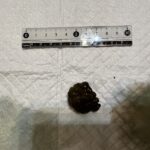
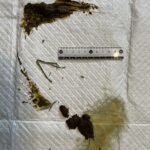
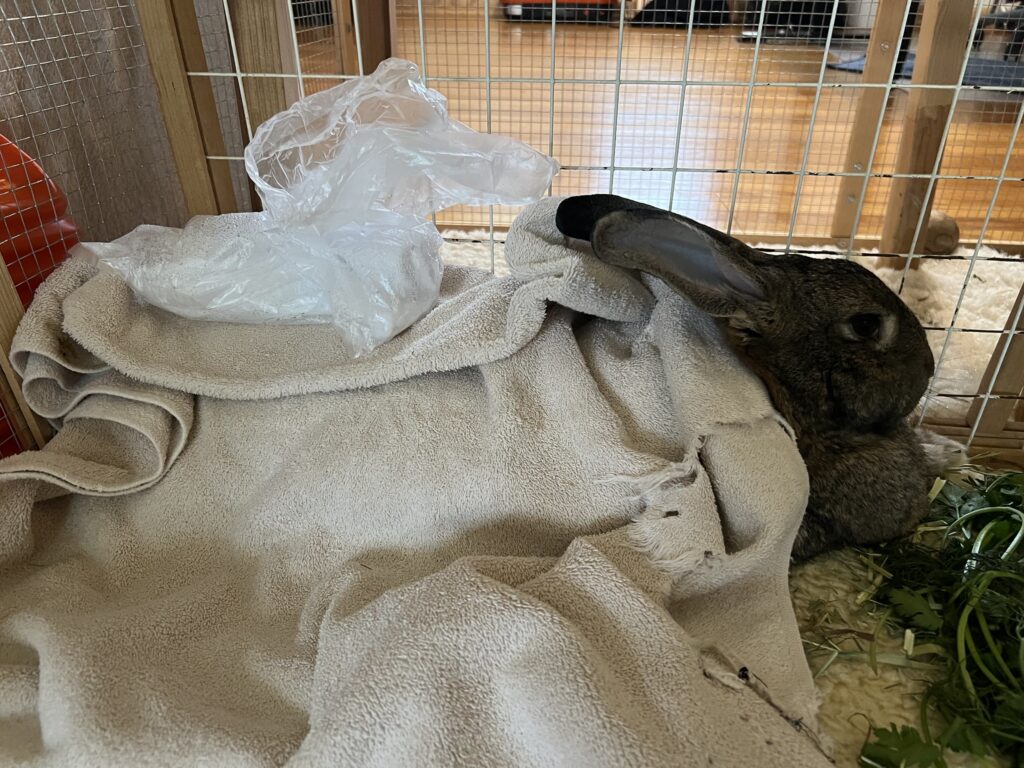
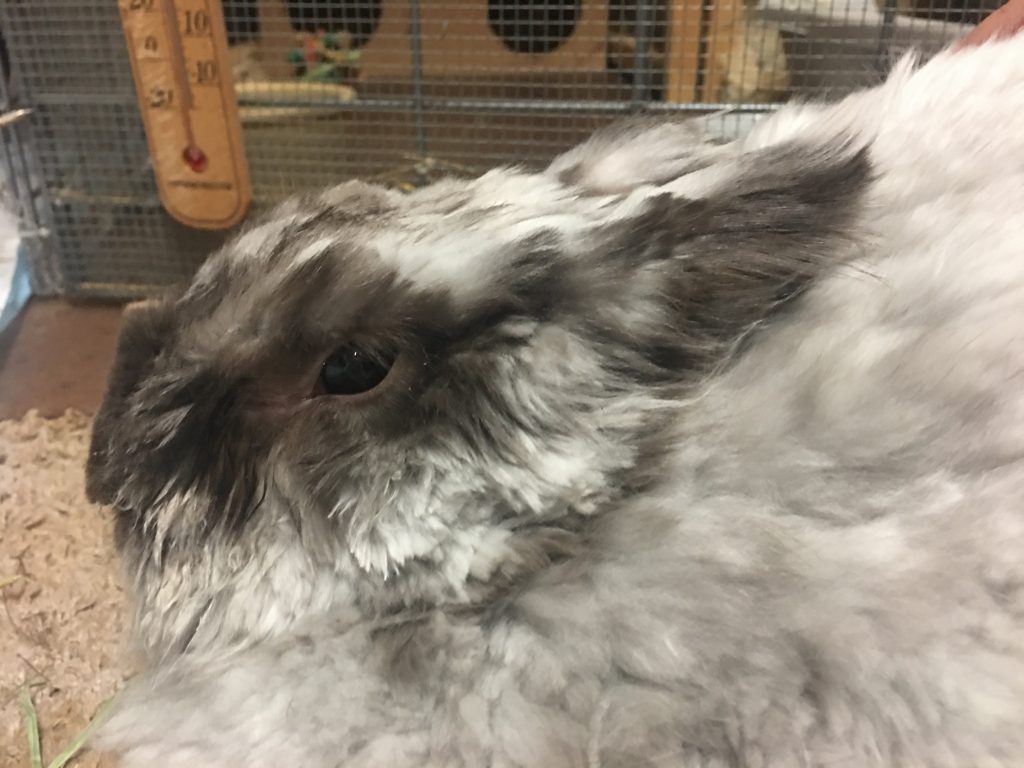
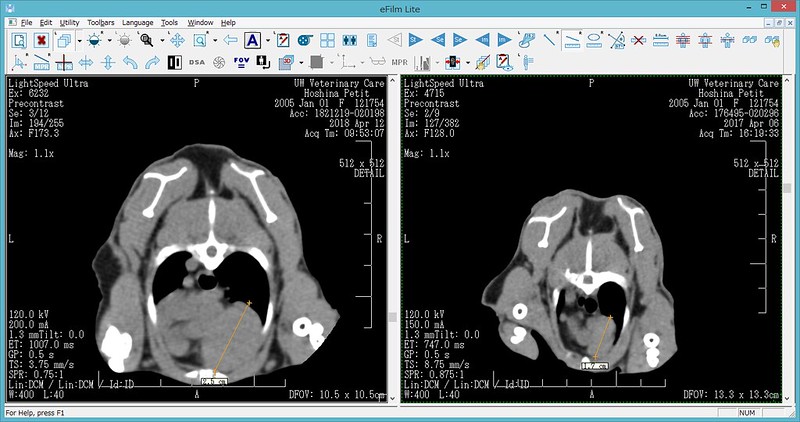
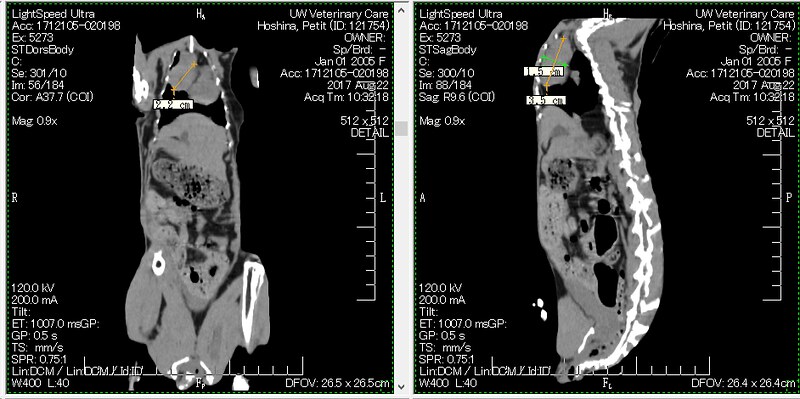
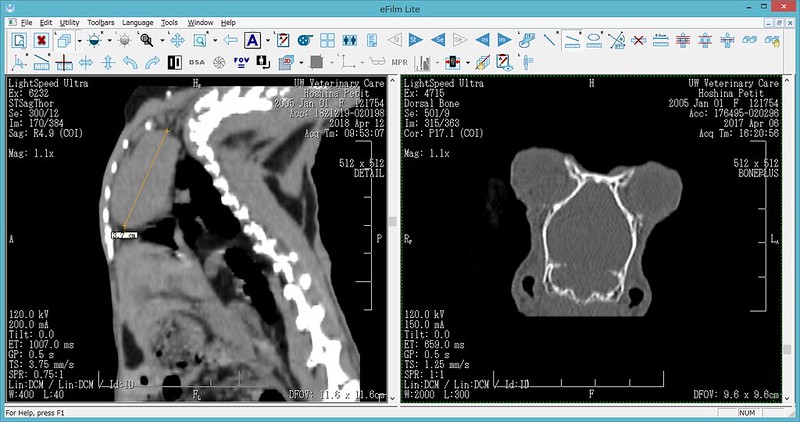

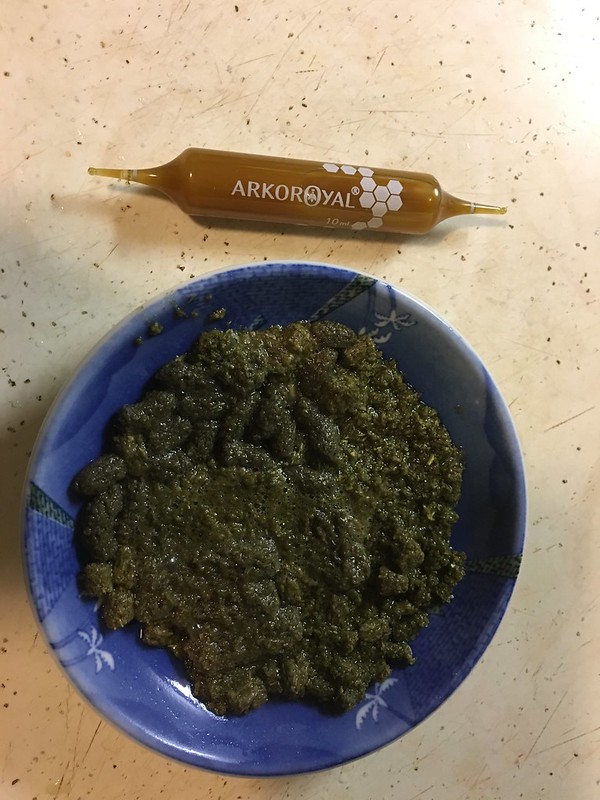
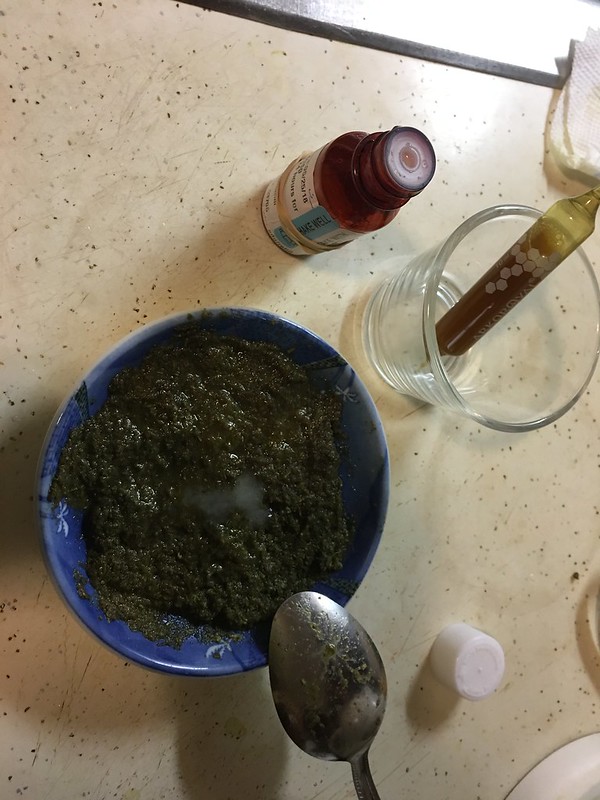
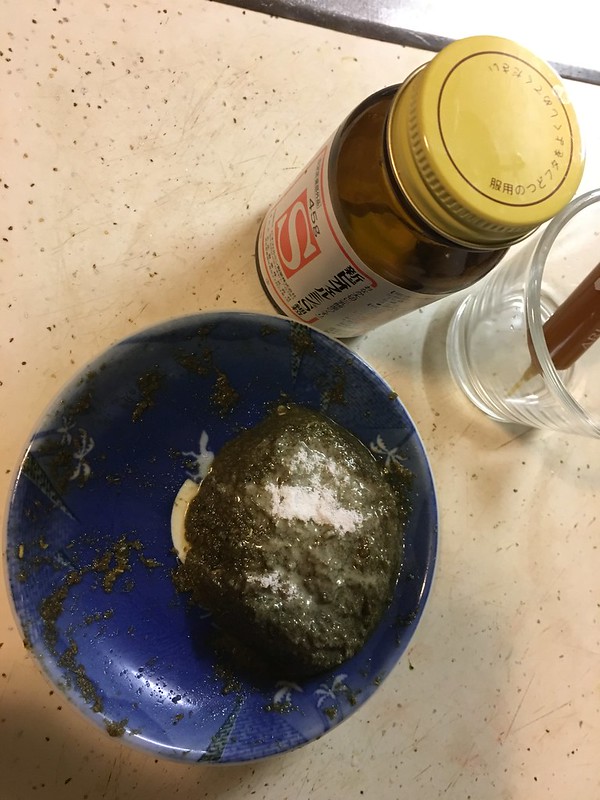
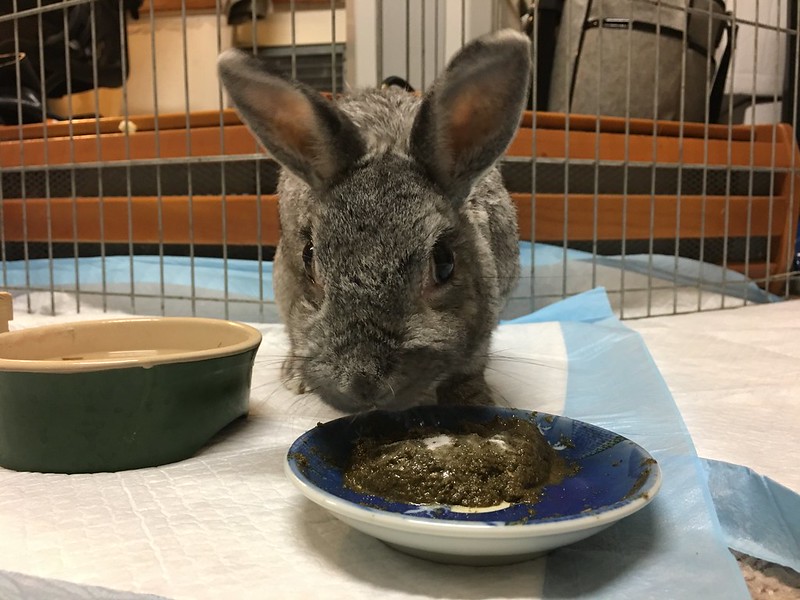
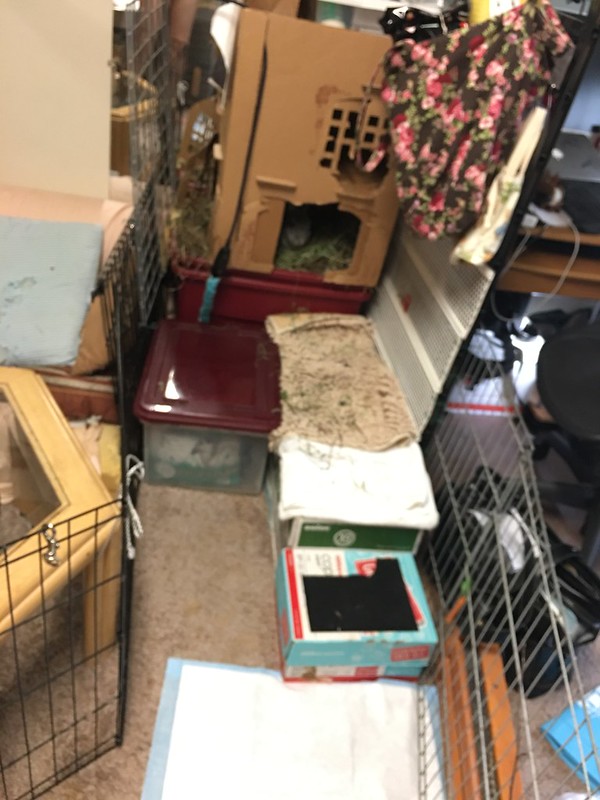
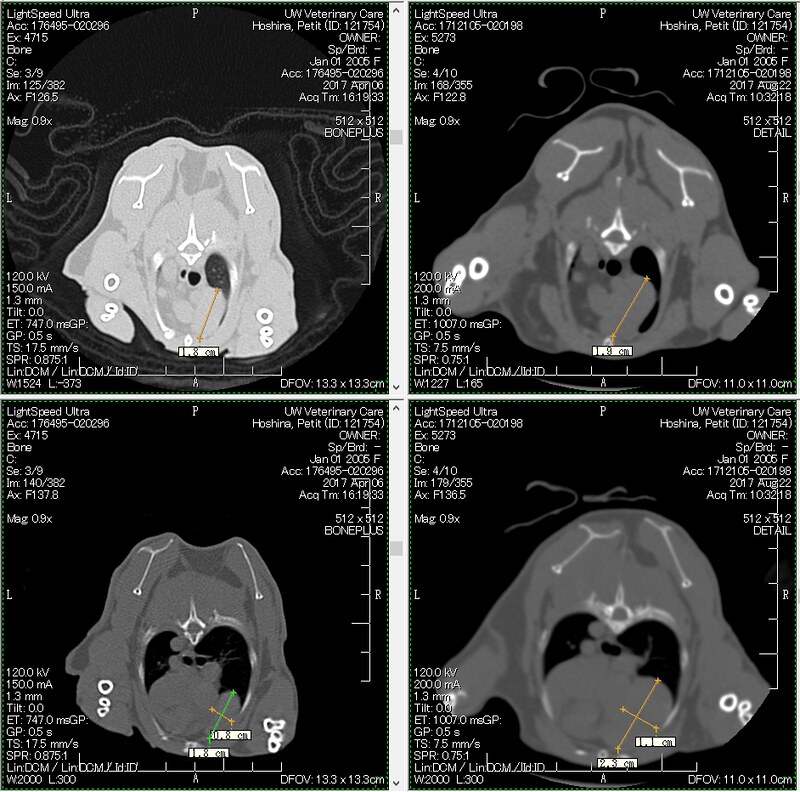
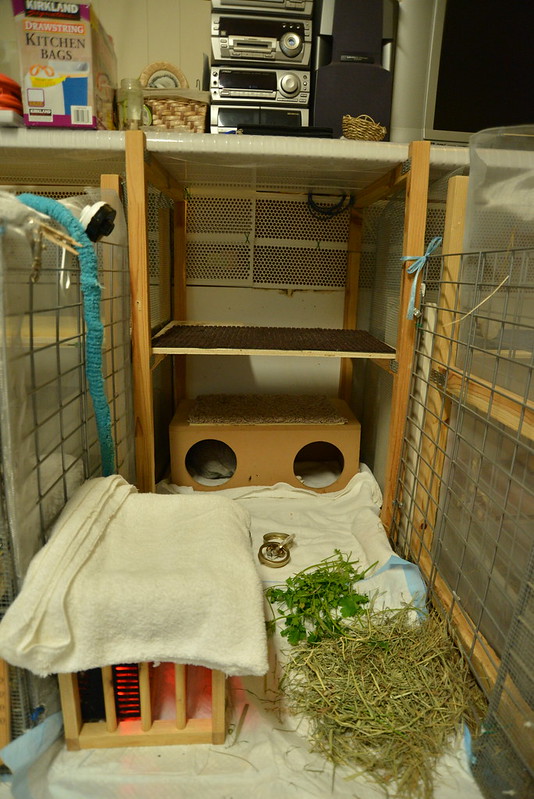
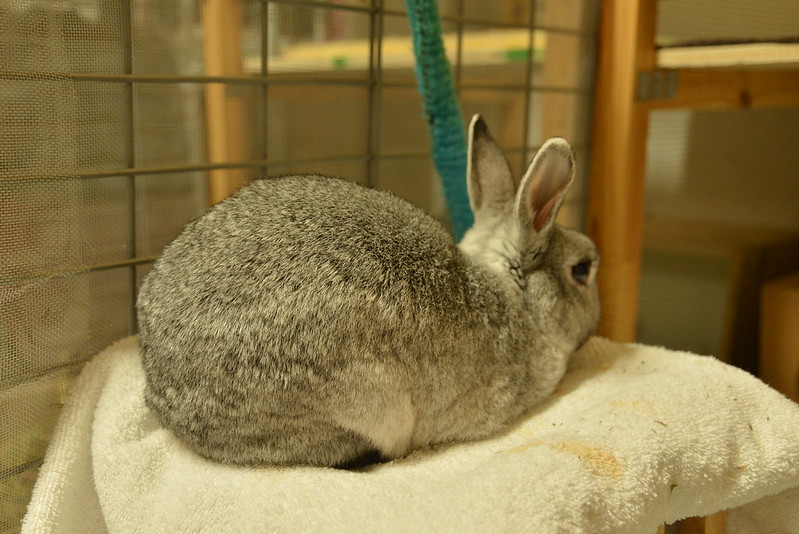
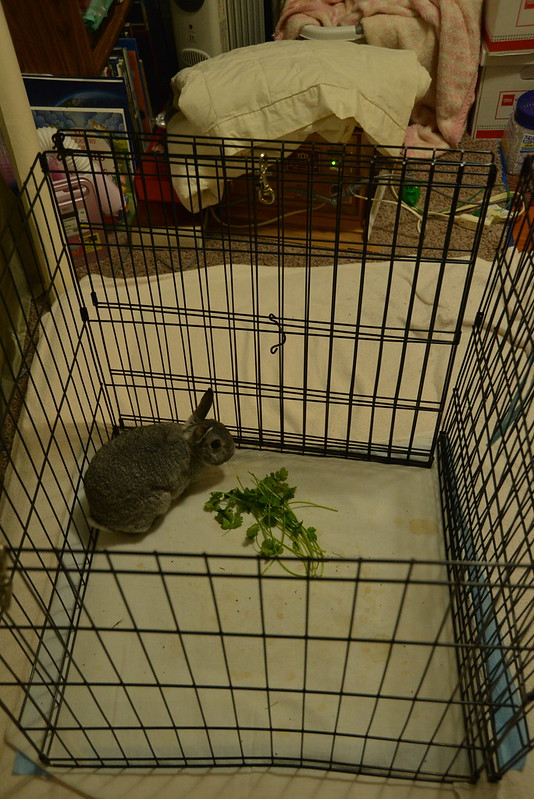
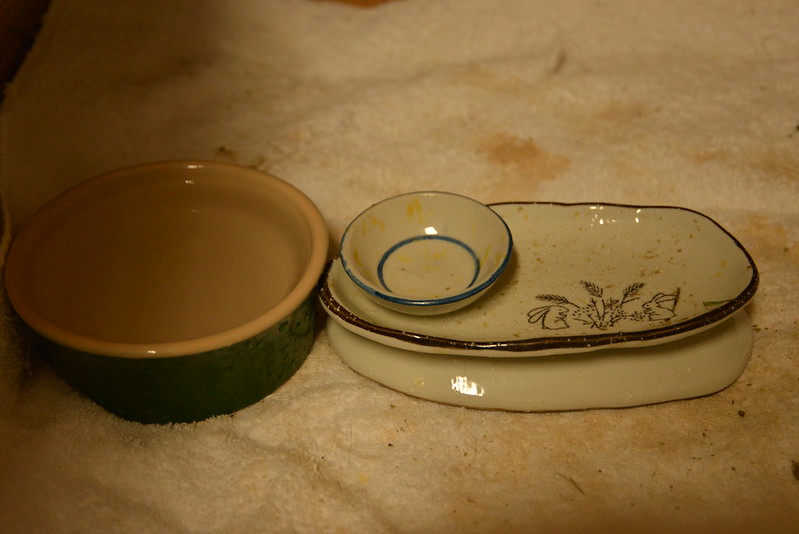

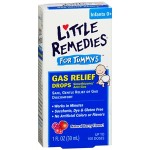

 米Whole Foods Marketでのウサギ肉販売の件についての続報です。
米Whole Foods Marketでのウサギ肉販売の件についての続報です。





